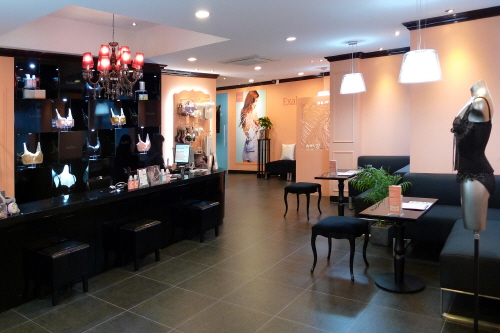PR Plastic Surgery [Tax Refund Shop] (PR 성형외과의원)
5.1Km 2024-06-26
13F, 134, Dosan-daero, Gangnam-gu, Seoul
-
Mariang Plus - Konkuk Univ. Branch [Tax Refund Shop] (마리앙플러스 건대)
5.1Km 2024-04-22
1F, 40, Dongil-ro 20-gil, Gwangjin-gu, Seoul
-
Forever Plastic Surgery (포에버성형외과의원)
5.1Km 2025-10-23
(5th Floor, Patio9), 742 Nonhyeon-ro, Gangnam-gu, Seoul
Forever Plastic Surgery Gangnam is located near Hakdong Station on Subway Line 7 (Nonhyeon-dong, Gangnam). You can receive all cosmetic surgeries and procedures including facelifts, skin care, obesity, hair transplant, and non-surgical cosmetic procedures in one place. Our 8 medical staff with about 30 employees specializes in both dermatology and plastic surgeries. We can provide services in English, Chinese, Russian, and Japanese. With various procedures and laser equipment, we will guide you to the most suitable method according to your condition or recovery period.
Feel free to visit and receive consultation without any fee. In addition, we issue a reimbursement slip for refund at the airport refund counter.
Aimerfeel - Garosu Branch [Tax Refund Shop] (에메필 가로수점)
5.1Km 2024-04-22
1F, 113, Dosan-daero, Gangnam-gu, Seoul
-
Davich Optical - Sinsa Branch [Tax Refund Shop] (다비치안경 신사)
5.2Km 2024-04-18
109, Dosan-daero, Gangnam-gu, Seoul
-
Exabra (엑사브라)
5.2Km 2024-05-16
132, Dosan-daero, Gangnam-gu, Seoul
+82-2-6085-9017
Exabras are handmade under garments specialized for functional bridal wear. Exbaras’ product “Grow Night,” an industry first, is a line of sleeping bras to help the reshaping process for breast implant patients.
The store located in Nonhyeon-dong provides consultations, fitting services, as well as refreshments. Reservation is advised since the store has been drawing lots of visitors after featured in the cable TV show “Get it Beauty.”
Hyundai Department Store - Mia Branch [Tax Refund Shop] (현대백화점 미아)
5.2Km 2024-04-23
315, Dongsomun-ro, Seongbuk-gu, Seoul
-
Galaxy Lifestyle - Hyundai Mia Branch [Tax Refund Shop] (갤럭시라이프스타일 현대 미아점)
5.2Km 2024-04-16
315, Dongsomun-ro, Seongbuk-gu, Seoul
-
Stonehenge - Hyundai Mia Branch [Tax Refund Shop] (스톤헨지 현대 미아점)
5.2Km 2024-04-18
315, Dongsomun-ro, Seongbuk-gu, Seoul
-
![PR Plastic Surgery [Tax Refund Shop] (PR 성형외과의원)](http://tong.visitkorea.or.kr/cms/resource/79/3313479_image2_1.jpg)
![Mariang Plus - Konkuk Univ. Branch [Tax Refund Shop] (마리앙플러스 건대)](http://tong.visitkorea.or.kr/cms/resource/55/2878855_image2_1.jpg)

![Canaan Pharmacy [Tax Refund Shop] (가나안약국)](http://tong.visitkorea.or.kr/cms/resource/58/2887858_image2_1.jpg)
![Aimerfeel - Garosu Branch [Tax Refund Shop] (에메필 가로수점)](http://tong.visitkorea.or.kr/cms/resource/54/2887754_image2_1.jpg)
![Davich Optical - Sinsa Branch [Tax Refund Shop] (다비치안경 신사)](http://tong.visitkorea.or.kr/cms/resource/38/2879738_image2_1.jpg)

![Hyundai Department Store - Mia Branch [Tax Refund Shop] (현대백화점 미아)](http://tong.visitkorea.or.kr/cms/resource/89/2888589_image2_1.jpg)
 English
English
 한국어
한국어 日本語
日本語 中文(简体)
中文(简体) Deutsch
Deutsch Français
Français Español
Español Русский
Русский